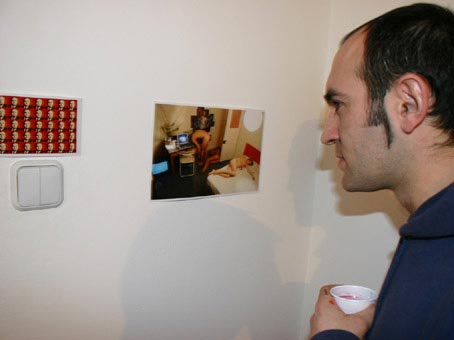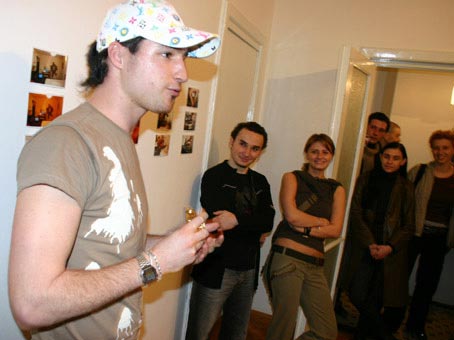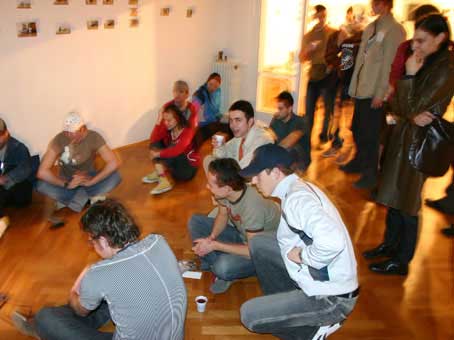house#LAB 2003/4
EXPERIMENTALIVING LONDON
Stefan Cosma
2020 Home Gallery - 18 March 2004
2020 & HOMELAB PRODUCTIONS
presents:
Stefan Cosma’s London Home Laboratory
I could say I met Stefan Cosma in a lab-like environment called the High School and I continued my acquaintance with him and his friends trough several flat-oriented events/parties at his place in Colentina, Bucharest. The High School was a laboratory shaping our minds and bodies for the better or for the worse. At the Colentina parties Stefan Cosma began a social and media mix that announced his present commitment to a holistic lab-like structure due to be officially enacted in Ibiza this year.
The place
The place, be it a home, apartment or
flat is always a temporary base for Stefan Cosma. Being temporary, restricted
in time calls for changes, mutations and dis-locations. His living-space
is always connected to momentary (also momentous) events such as the interrupted
faculty terms, training at Fabrica in Italy and the fruitful Ibiza experience.
Stefan Cosma is never totally dis-connected from his former, previous
living spaces. He always returns to his Colentina home-base, to his parents
in Germany, to Ibiza and now to Vlad Nanca’s 2020 home-space. His
flat in London was an intermediary space between Ibiza and Bucharest.
It became a sort of testing ground for a bigger project involving the
objects, lights, angles, multimedia equipment, photo models, and time-zones
of his day-to-day living. Now we can all enter this place.
Returning can be a tricky event.
It always has the promise of a comeback or the sweet-sour taste of the
proverbial starting anew from scratch.
Dis-connection from real life environments is always announcing other
self-replicating connections. In the wake of leaving one place behind,
we got the mobile phone exhibition Suicide of Life by Stefan Cosma and
curator Cosmin Costinas. As such, issues like the displayable format and
multi-functionality come to the forefront.
The home-gallery hosting concept
Home-galleries have always been with us
(see early examples in Cluj).
The 2020 home-gallery is another outgrowth of a former renovated living
space: Vlad Nanca’s and Kate Smith’s apartment. The mini-gallery
(see Ioana Nemes’s Chasing Myself exhibition) was also hosted inside
the home-gallery. In the end it’s a question about who is hosting
who. It’s a former derelict space hosting a new-white-washed-version
hosting a gallery.
The first show hosted a fake tele-shopping extravaganza with various artifacts
collected from the Bucharest open-air markets (Obor) by Stefan Cosma and
Bathukan. These were artifacts on the way to extinction even if their
design seems timeless. Meanwhile even the above-mentioned flea-markets
seem endangered with the rise of new, clean, specially-designated mall-like
structures.
Beyond the clarification and the functionality of such hosting tactics
it is important to recognize certain trends: investing in downtown real-estate,
independence vis-a-vis Art University and Museums, lingering gallery aesthetics(white,
well-lit, accessible, central) and a fusion of the living space with the
exhibition space.
In due time we could look forward to a complete (if open) compilation of texts tracing the separate histories of home-galleries in Romania, in different cities and at different times. Thus having the possibility to focus on the practice of opening-up different spaces such as former derelict or under-used spaces, garage’s or phone-booth’s, fridge’s, or small, mobile box-shaped exhibitions (such as the one proposed by curator Erden Kosova). In the near-future we may witness the rise of home-gallery collectors auctioning for the whole space as such and its separate, internal elements.
ST
 |

|

|